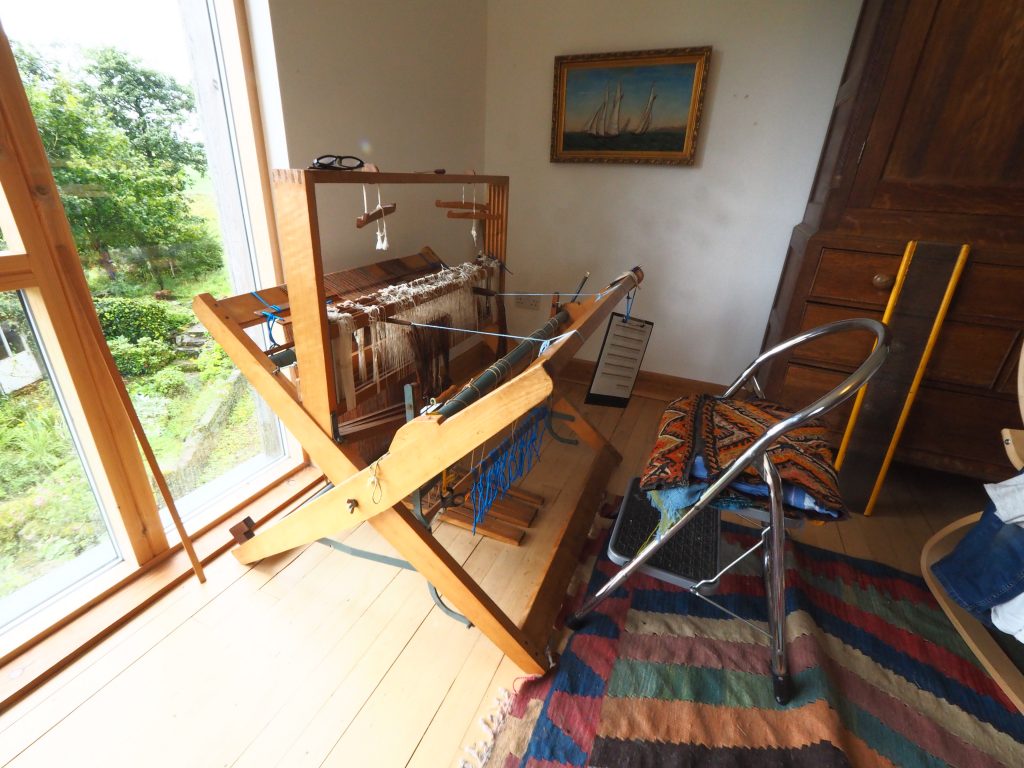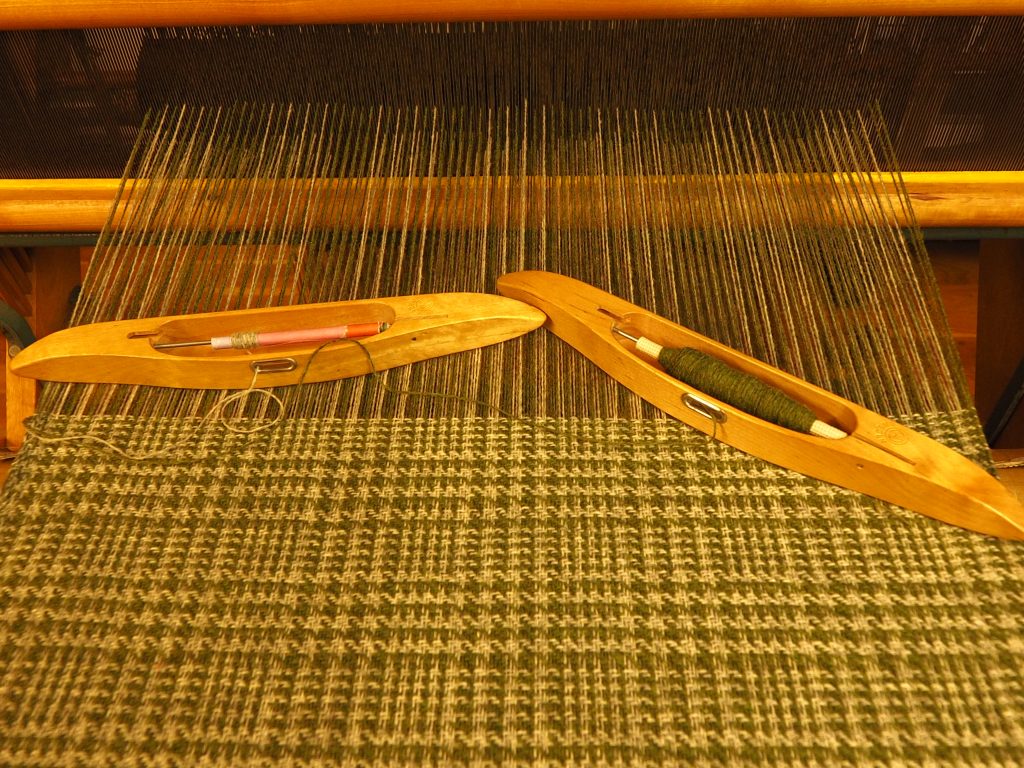

4 shafts and 6 treadles is a fairly common spec for a domestic floor loom, and 36″ is about as wide as you’d want to weave with hand shuttles. Made by Lillstina of Finland sometime (guess) about the 1960’s, this one has the advantage of being able to fold with the warp still on, so less of a roomful than other types of floor loom.
Choosing a combination of threading (which warp thread goes through which shaft), tie-up (which treadle lifts which shafts), and treadling (which treadle is used for which weft thread), opens up a vast range of weave structures. The counter-balance action especially suits weaves like the 2/2 twill structure seen in tweed and tartan, where two shafts are up and two are down. However, this wee loom has also been willing (though I can’t say entirely happy!) to make less ‘balanced’ pieces in its time, like honeycomb blankets and overshot scarves.
This was my first loom. I’m told that the original owner was Mabel Ross (known more as an expert hand-spinner than as a weaver) so maybe it was she who made a couple of enhancements… one modification adds a removable race to the beater allowing (faster!) weaving with roller shuttles; and there’s another, involving a couple of brackets and an extra cross-beam, that no-one has been able to fathom out so far.


A couple of looms are currently on loan to the Bennie Museum in Bathgate, who host our very ad-hoc Saturday weaving group (that’s one of the Custodians working at the Dryad rug loom). The Lillstina is in its element here, weaving the ‘spring’ variant of the Museum’s signature houndstooth tweed. A sample of the ‘autumn’ variant is hung over the castle.